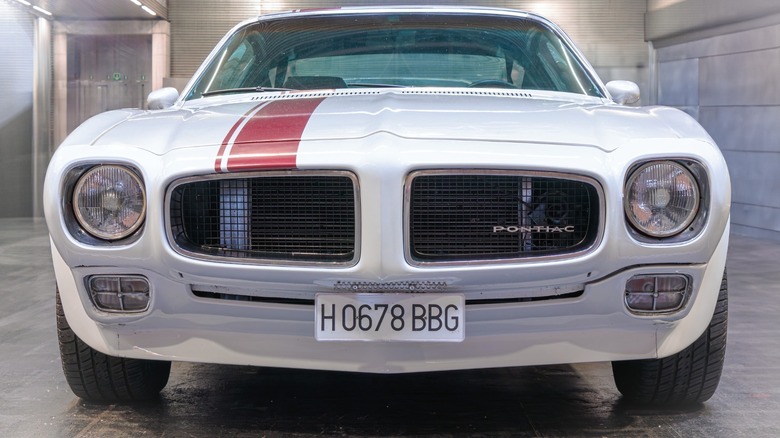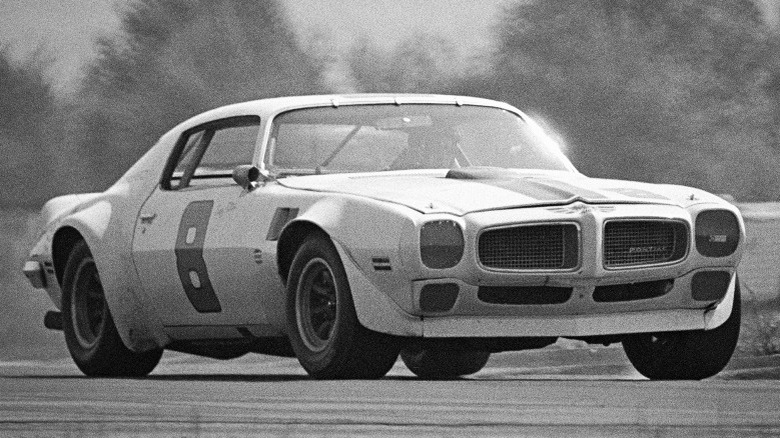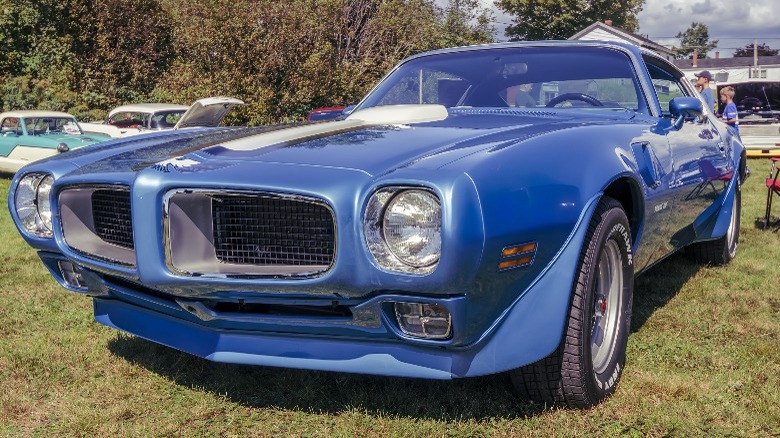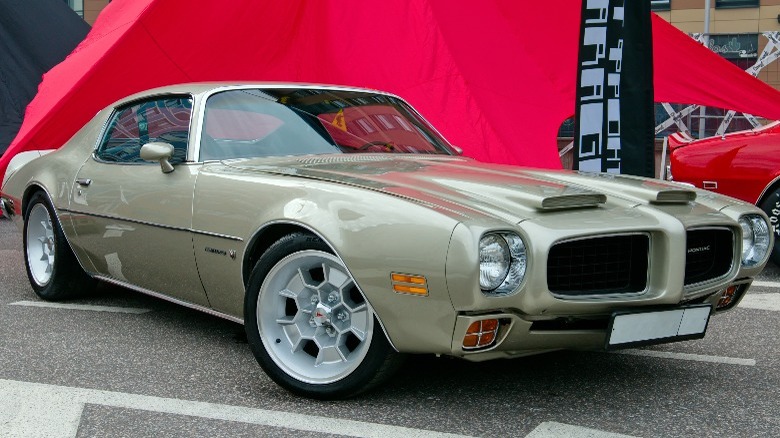5 Facts About The 1970 Pontiac Firebird Probably Only Hardcore Car Fans Know
General Motors was caught flat-footed when Ford introduced the Mustang for the 1964 ½ model year. Sure, the General had built its share of muscle cars in the past — generally they were versions of otherwise plebeian two-doors that a grandmother might drive to church, but with honkin' big V8s under the hood to give them the street cred necessary to appeal to the Baby Boomers coming of age at the time. However, the Mustang was purpose-built, smaller and lighter weight compared to traditional muscle cars, with the visual appeal to attract new buyers who might have otherwise considered a model from an import brand.
The pony-car counterpunch from General Motors came in the form of the Chevrolet Camaro and Pontiac Firebird in 1967, with the Firebird intended as the more upscale of the two. Both models experienced a modicum of sales success, and for the 1970 model-year Pontiac introduced a new Firebird with European-inspired styling and featured some interesting details across its model range that, now, only hardcore fans of the Screaming Chicken know about.
The 1970 ½ Firebird had one-year-only features
As the debut for the second-generation Pontiac Firebird, this version is officially known as a 1970 model year. However, because of labor strikes and tooling troubles for the brand-new design, the introduction of the model was delayed until February of 1970. Actual production of the new F-body didn't begin until March and continued only until August of the same year, resulting in a small production volume of around 49,000 total units for all trim levels. Because of the late start to its production, this first year of production is often affectionately referred to as the 1970 ½ Pontiac Firebird by hardcore fans of the marque.
Firebird aficionados will quickly identify a Firebird model as a 1970 by the seats, which have a low-back style with a separate headrest, carried over from the previous generation. Models from 1971 and on into the second generation received updated seats that featured one piece back and no headrest. The 1970 model-year had additional interior details that were model specific including a black shift knob, the option of a bright blue interior that would be subdued in future models, and a dashboard grain that was changed in later editions.
The 1970 Trans Am engines were the last of their kind
While the 1970 Firebird Trans Am had a brand new body style, its two engine options carried over from the previous model. Standard on the Trans Am was an L74 Ram Air III 400 cubic-inch V8 making 335 horsepower and paired with a four-speed manual transmission and a limited-slip differential at the rear. Those who were in the know could prod their salesperson to check the box for the Ram Air IV 400 cubic-inch V8 featuring a cold-air intake that boosted engine output to 345 horsepower, an option equipped on only 88 of the 3,196 Trans Ams produced for the 1970 model year.
Due to increased emissions regulations, these two engine options were eliminated from the 1971 model, making them unique to 1970 vehicles amongst the second-generation Trans Am production models. A 455 cubic-inch 335 horsepower V8 with a lowered compression ratio to meet the more-stringent emissions requirements became the new standard engine for the Trans Am in 1971. Unfortunately for enthusiasts, engine power would continue its decline over the next decade as the Trans Am and the rest of the industry entered the Malaise Era of American motoring.
The 1970 Firebird was offered in 22 colors
Car buyers today are treated to vehicles that are generally reliable, well sorted, and relatively efficient, but they rarely get many color options. Those who came to a Pontiac showroom to order a Firebird in 1970 were given a veritable crayon-box of color options — 22 to be specific — all with names that rival the names of paint products found at a local hardware store. With titles like Orbit Orange, Castilian Gold, Goldenrod Yellow, Palisade Green, Bermuda Blue, Palomino Copper, Mint Turquoise, and Starlight Black, a Firebird customer was limited only by their imagination and good taste.
Unlike lower trim levels of the Firebird, the 1970 Trans Am was available in only two different liveries: white with blue stripes, or blue with white stripes. Other Trans Am-identifying design elements included a shaker hood scoop to feed the Ram Air intake, front and rear spoilers, and wheel flares that added to its ready-to-race look.
With its limited production numbers, status as a transitional model between the first two generations, unique interior and exterior design elements, and Ram Air engine options, the 1970 Pontiac Firebird series is most definitely a collectible classic and a milestone in the badge's heritage.



